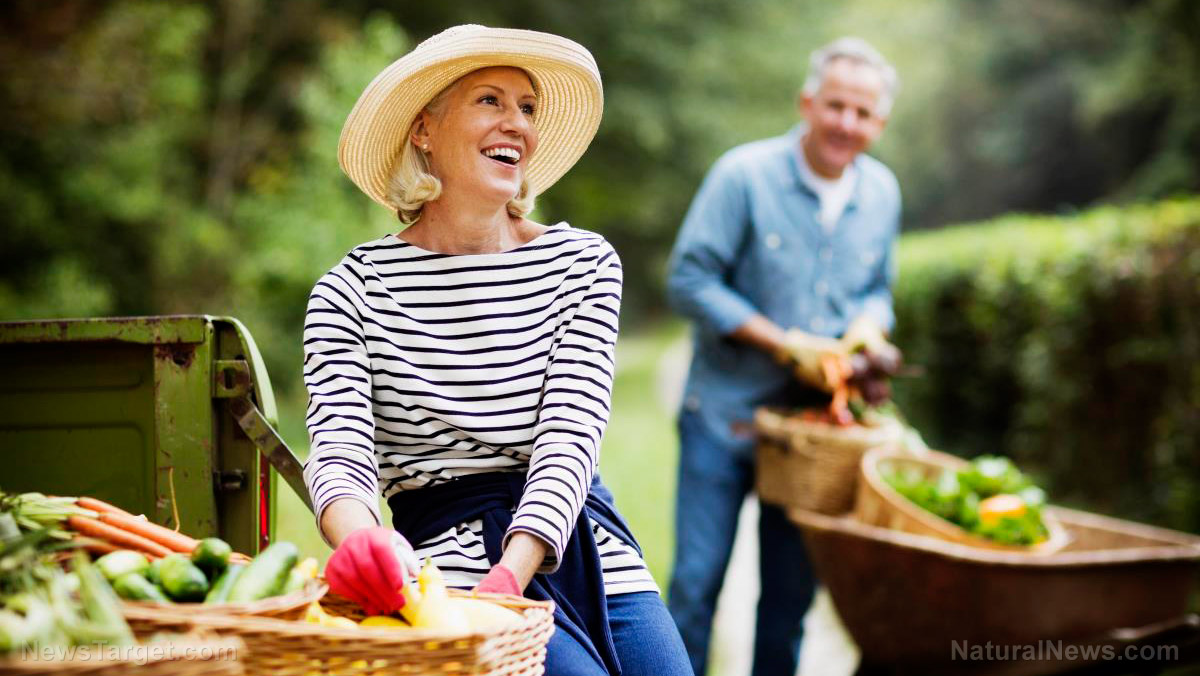
Basic gardening tips
Different root vegetables are considered "cool weather" crops, meaning they thrive when daytime temperatures are in the seventies but struggle to survive in hot weather.
But if you missed your chance to plant root crops as early in spring as possible, you can start the seeds while it's still summer. If you don't, your seeds might not mature before freezing weather ends the growing season.
To determine when to start your seeds, find out how long the crop takes to grow and where you live. First, work backward from the average date of the first frost in your area using this tool.
Then, subtract the "days to maturity" indicated on the seed packet to determine the planting date. Subtract an additional two to three weeks if cold weather comes earlier than usual. (Related: How to grow, use and store amaranth, the fiber-rich superfood.)
When planning a fall harvest for your garden, it's best to plant fast-maturing crops.
- Don't plant varieties that need more than 75 days to mature, like celeriac (celery root), fennel bulb, parsnips and potatoes.
- Don't plant tropical crops that require heat and sun, like jicama, sweet potatoes and yams.
- Plant root vegetables in the Brassica family, like beets, radishes and turnips, along with carrots.
If your root crops grow slow or you get them in late, you may be stuck with "baby" roots that are sweet and succulent compared to mature crops. To keep baby roots fresh, leave them in your garden and harvest as needed throughout fall and all through winter, until the ground freezes. Cover baby roots with a layer of straw to protect them on frosty nights.
Consider the unique heirloom and modern varieties detailed below for a fruitful fall harvest.
Chioggia beets (60 days to maturity)
Chioggia beets, also called candy cane or candy-striped beets, can be cooked. However, Chioggia beets are often consumed raw or pickled.
Buy Chioggia beetroot seeds at nurseries that specialize in heirloom plants. If you can't find seeds locally, buy them online.
Beets need rich, well-drained soil. To grow beets with healthy roots, incorporate several inches of compost or manure into the soil.
Plant the seeds directly in your garden as soon as the soil can be worked in early spring. Alternatively, you can plant beets when the weather cools in fall. Leave 12 inches of space between rows and three to four inches between each seed.
If you have time, soak the seeds for one to two hours before planting to promote germination then cover the seeds with 1/2-inch or one inch of soil.
Water Chioggia beets regularly to keep the soil evenly moist. It's important to water your crops regularly during the first six weeks, but don't water them too much that the soil becomes soggy.
Leave two to three inches of organic mulch to moderate soil moisture and temperature and prevent weeds from growing. Pull weeds by hand as they appear. When using a hoe for weeding, be very careful to avoid damaging the growing roots.
Thin Chiogga beet plants if they become crowded. You'll need a spacing of two to six inches for healthy root development.
Cosmic purple carrot (70 days to maturity)
Cosmic purple carrot is a newer variety of purple carrot with yellow-orange flesh. The plant matures faster than most, making it suitable for fall gardening.
Oasis turnips (50 days to maturity)
Oasis turnips are a small, sweet variety. You can eat them fresh in salads.
Purple daikon (40 days to maturity)
Purple daikon is shorter and plumper than the usual long white varieties. Additionally, heirloom purple daikons can be used for making kimchi and pickled vegetables.
Watermelon radish (60 days to maturity)
Watermelon radishes are unique because their flesh looks like a watermelon. This heirloom variety of radish tastes rather sweet.
Watermelon radishes grow best in well-drained, fertile, deep, sandy soil full of organic matter.
Before you sow watermelon radish seeds, amend the soil with two to four inches of well-composted organic matter and two to four cups of all-purpose fertilizer with 16-16-8 or 10-10-10 percent of nitrogen, phosphorus and potassium per 100 square feet, particularly if you're growing crops in heavy soil. Work the organic matter and fertilizer into the top six inches of soil.
Sow radish seeds directly into your garden when soil temps are 40 F (4 C). However, the seeds germinate best at 55 to 75 F (12-23 C). Sow seeds in rich soil and leave six inches of space between rows, with a depth of half an inch. Tamp the soil down lightly, then water the seeds.
Water your crops regularly as the radishes grow. When the seedlings are an inch tall, thin them to two inches apart.
Visit HomeGardeningNews.com for more articles about other superfoods you can grow in your backyard.
Sources include:
Please contact us for more information.

















